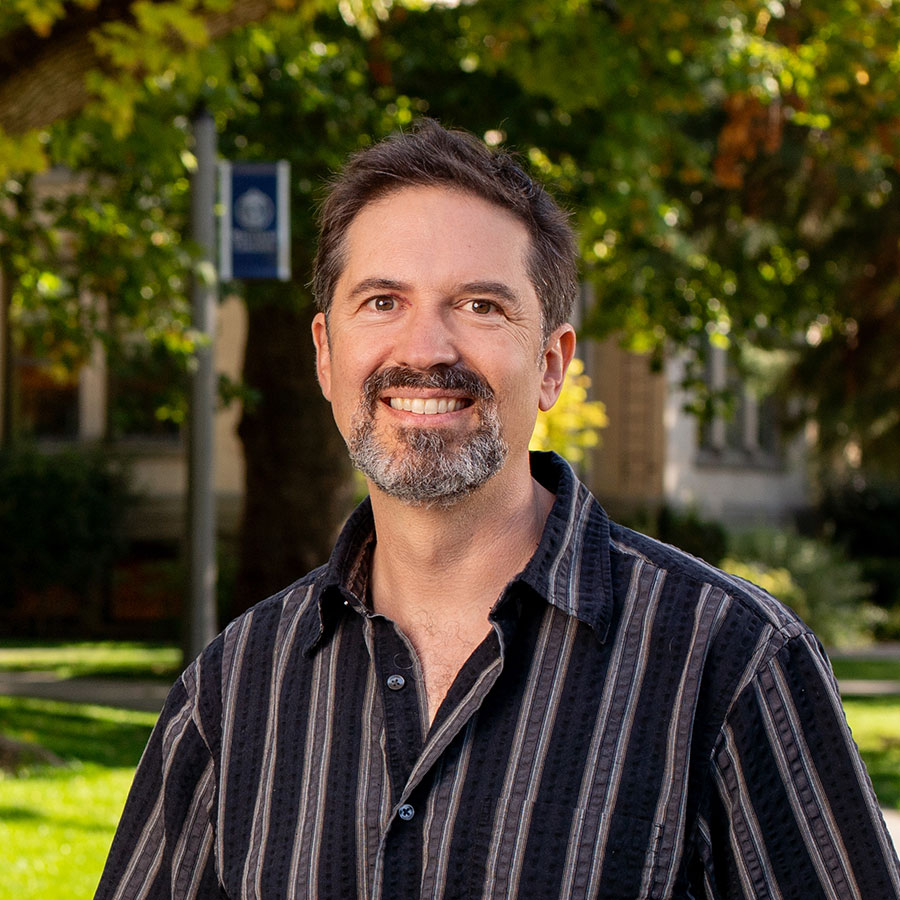

Nick Bader
-
Hall of Science 150
-
509-527-5113
My research interests include Quaternary and modern ecology, the global carbon cycle, soil biogeochemistry, Quaternary climate change, and catchment hydrology. My interest in geology was sparked as a child after seeing the remains of prehistoric creatures at the Museum of Natural History in New York. After high school, I went on to study geology at Earlham College in Richmond, Indiana. During college, a summer job excavating an archeological site along the Ohio River got me interested in palynology and plant macrofossils. I pursued this interest for my Master's research at the University of Arizona at Tucson, where I used fossil pollen from Death Valley's Badwater Basin to reconstruct Quaternary climate changes. After graduating from the University of Arizona, I extended my study of ecology and climate change to modern ecological settings. At the University of California at Santa Cruz, I earned my doctorate for my work on the influence of plants and soil microbes on the global carbon cycle, and on global climate. I am lucky to be a part of the geology department at Whitman College, where I have been teaching geology, geographic information systems, soils, and environmental studies since 2007. My current research interest is paleosols (ancient buried soil horizons) and what they can tell us about past climate.
GEOL 125 - Environmental Geology
An introductory geology course focused on human interaction with the environment and earth resources.
GEOL 229 - Geology and Ecology of Soils
A course focused on the dynamic systems of soils and soil formation, and the role soils perform in ecosystems.
GEOL 258/358 - Regional Geology
A 4-day field course for students to sythesize geologic concept and learn field skills.
GEOL 301 - Hydrology
A course focused on understanding water resources, including surface and groundwater and their role in the larger water cycle.
GEOL 418 - Introduction to Geographic Information Systems
An exploration of the applications and the conceptual framework for computer GIS, with labs teaching the use of ArcGIS Pro.
Lopez-Maldonado, R., J.B. Bateman, A. Ellis, N.E. Bader, P. Ramirez, A. Arnold, O. Ajoku, H. I Lee, G. Jesmok, D. Upadhyay, B. Mitsunaga, B. Elliott, C. Tabor, and A. Tripati, 2023. Paleoclimate changes in the Pacific Northwest over the past 36,000 years from clumped isotope measurements and isotope-enabled model analysis. Paleoceanography and Paleoclimatology 38(2), 1–22.
Soule, D., R.D. Gougis, C.M. O’Reilly, N.E. Bader, T. Mexiner, C.A. Gibson, and R.E. McDuff, 2018. EDDIE modules are effective learning tools for developing quantitative literacy and seismological understanding. Journal of Geoscience Education 66, 97–108.
O’Reilly, C.M., R.D. Gougis, J.L. Klug, C.C. Carey, D.C. Richardson, N.E. Bader, D. Soule, D. Castendyk, T. Meixner, J.F. Stomberg, K.C. Weathers, and W. Hunter, 2017. Using large datasets for open-ended inquiry in undergraduate classrooms. Bioscience 67, 1052–1061.
R.D. Gougis, J.F. Stomberg; A.T. O’Hare, C.M. O’Reilly, N.E. Bader, T. Meixner, and C.C. Carey, 2017. Post-Secondary Science Students’ Explanations of Randomness and Variation and Implications for Science Learning. International Journal of Science and Mathematics Education 15, 1039–1056.
Bader, N.E., P.K. Spencer, *A.S. Bailey, *K.M. Gastineau, *E.R. Tinkler, C.J. Pluhar, and B.N. Bjornstad, 2016. A loess record of pre-Late Wisconsinan glacial outburst flooding, Pleistocene paleoenvironment, and Irvingtonian fauna from the Rulo site, southeastern Washington, USA. Palaeogeography, Palaeoclimatology, Palaeoecology 462, 57–69
Bader, N.E., D.C. Soule, D.N. Castendyk, T. Meixner, C. O’Reilly, and R.D. Gougis, 2016. Students, meet data. Eos 97(8), 14–19.
Bader, N.E., K. Nicolaysen, *R. Lopez-Maldonado, *K.E. Murray, and *A.C. Mudd, 2015. Extensive middle Miocene weathering interpreted from a well-preserved paleosol, Cricket Flat, Oregon, USA. Geoderma 239–240: 195–205.
Bader, N.E., K. Pogue, and R.J. Carson, 2015. Geography II: Weather, water, and weathering. In R.J. Carson (ed.) Many Waters: Natural History of the Walla Walla Valley. Keokee Books, Sandpoint, Idaho.
†Bader, N.E. and K. Nicolaysen, 2013. Lavas and interbeds of the Powder River Volcanic Field, northeastern Oregon. In R.J. Varga (ed.) Keck Geology Consortium: Proceedings of the Twenty-
Sixth Annual Keck Research Symposium in Geology. Pomona College, Keck Geology Consortium.
Frankel, K.L., K.W. Wegmann, A. Bayasgalan, R.J. Carson, N.E. Bader, *T. Adiya, *E. Bolor, *C.C. Durfey, *J. Otgonkhuu, *J. Sprajcar, *K.E. Sweeney, R.T. Walker, and T.L. Colbert, 2010. Late Pleistocene slip rate of the Hoh Serh-Tsagaan Salaa fault system, Mongolian Altai and intra continental deformation in central Asia. Geophysical Journal International 183: 1134–1150.
†Bader, N.E., A. Bayasgalan, R.J. Carson, K.L. Frankel, and K.W. Wegmann, 2009. Geology of the Hoh Serh Range, Mongolian Altai. In A.P. DeWet (ed.) ̈ Keck Geology Consortium: Proceedings of the Twenty-Second Annual Keck Research Symposium in Geology. Franklin and Marshall College, Keck Geology Consortium, p. 219–225.
Dijkstra F.A., N.E. Bader, W. Cheng, and D.W. Johnson, 2009. Does accelerated soil organic matter decomposition in the presence of plants increase net N mineralization? Soil Biology and Biochemistry 41: 1080–1087.
Gershenson, A., N.E. Bader, and W. Cheng, 2009. Effects of substrate availability on the temperature sensitivity of soil organic matter decomposition. Global Change Biology 15: 176–183.
Schook, D.M., M.D. Collins, W.E. Jensen, P.J. Williams, N.E. Bader, and T.H. Parker, 2008. Geographic patterns of song similarity in the Dickcissel, Spiza americana. The Auk 125: 953–964.
Bader N.E. and W. Cheng, 2007. Rhizosphere priming effect of Populus fremontii obscures the temperature sensitivity of soil organic carbon respiration. Soil Biology and Biochemistry 39: 600–606.
Bader N.E., 2000. Pollen analysis of Death Valley sediments deposited between 166 and 114 ka. Palynology 24: 49–61.
† denotes conference paper